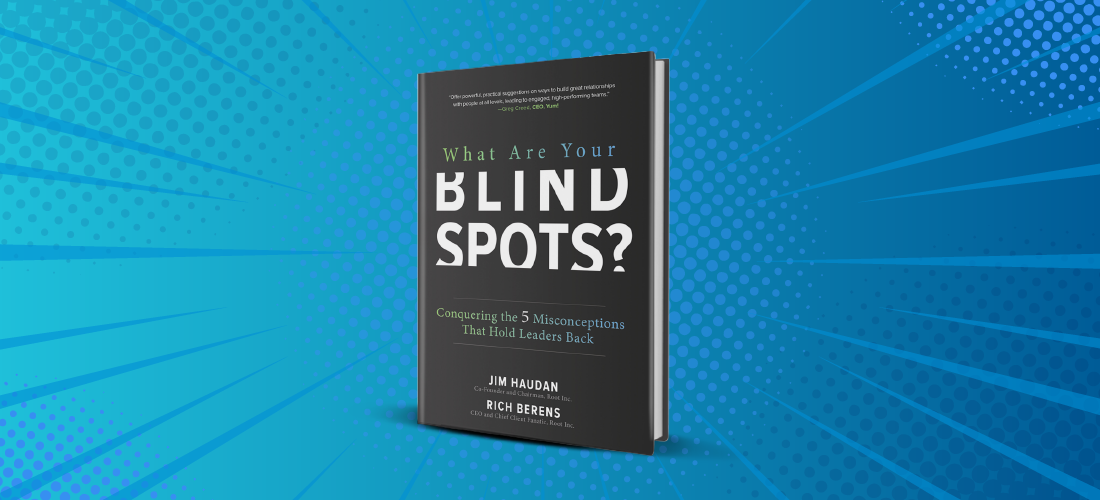The purpose of strategic planning is not to make plans. It is to change the way that we think and act. If newly formed visions and strategic plans are intended to propel organizations to places they have never been, at a very personal level it requires people to do things they have never done. As a result, successful strategy activation is all about behaviors. The “act” outperforms the “think” every time. And while it requires changing behaviors at all levels of the business, leaders must lead the way.
So what does that mean exactly?
Several years ago a Fortune 300 company was preparing to launch its new strategy at a January meeting of its top several hundred leaders. For three days the leaders discussed the merits of the plan and the critical actions required for achieving the desired results. The group seemed engaged. At 11 a.m., just before the noon close of the three-day meeting they knew they wanted to orchestrate a rousing send off. Each person in the audience received a device to vote anonymously on how confident they felt about the new strategic plan. It was assumed that over their time together, the senior team had won the commitment of top leaders and that sponsorship and strong support would be widespread. What flashed on the screen after three days of intense conversation was a stunning 19 percent vote of confidence by the top leaders of this 53,000-person company.
After the shock wore off, the leaders were asked for the reasons behind their skepticism. What was quickly discovered behind the lack of endorsement was a perceived hypocrisy between what the leaders claimed the new company direction to be, and the way senior leaders continued to exhibit “old strategy behaviors.” Once the leaders got the message and corrected their personal behaviors, the implementation of the strategy took off and drove a doubling of the stock price.
Another example of actions speaking louder than words was with a large Fortune 100 company that was embarking on a bold business transformation. The leadership spent countless hours analyzing market data, market positions, growth opportunities and margin possibilities. They carefully crafted a robust strategy to drive the “thinking differently” part of the overall plan. As they deployed the strategic plan to the top 225 leaders of the company and sought to enlist their support, they heard a single resounding theme – “The strategy is not the problem – it is the fundamental disbelief that leaders will change their behaviors to bring the strategy to life.” The top 225 leaders began to stress what they called the “behavioral proof points” that illustrated the new behaviors that matched the transformation and called out the behaviors that needed to change.
“The strategy is not the problem – it is the fundamental disbelief that leaders will change their behaviors to bring the strategy to life.”
Managing the Behavior Change
The problem – and the opportunity – is that deeply embedded traditional behaviors tend to persist and they change far more slowly than marketplace factors and the new strategic thinking. The speed of leader behavior change becomes the pace car for strategic change.
There are three key areas of focus that constantly turbo-charge the organizational change race:
- Embrace public vulnerability – Successful change requires a rigorous confrontation of reality. What does the current state of your business look like? What gaps or barriers exist? Why are you having these challenges? What’s good or bad about the company culture? But this approach can never be an effective effort if leaders don’t go first in being brutally honest about the most significant behaviors they must personally change. When leaders go first by identifying their own personal behaviors that are inconsistent with the new strategy, they send two critical messages:
- First, they are setting the precedent for others to be vulnerable and acknowledge the importance of embracing the discomfort associated with being accountable to drop old behaviors and adopt new ones.
- Second, if leaders are publicly vulnerable on behaviors that need to change, they send the signal it is safe to talk about other company weaknesses and it encourages managers and employees to make key suggestions to change behaviors, practices, rituals, habits and routines for executing the new strategy.
- Let go – Letting go is hard to do. Yet it is core to successful change. During the IBM transformation of the late 1990s, Former IBM CEO Lou Gerstner constantly referred to the metaphor of Tarzan. He often encouraged his leaders to think of their role of leading change as swinging in the jungle and letting go of the vine of the business. They knew to grab the vine for the new business that they were creating – all with the threat of hungry lions below and the horizon of success slightly visible through the trees.Letting go of the business we know also involves letting go of the actions, behaviors, and roles that provided the current sense of value, achievement, and recognition. It also means letting go of what someone was very good at to develop new skills vital to the strategy for the future. We must be willing to move away from what we know how to do in the “business of yesterday” – which we have been good at and rewarded for – to take the risk to do what we don’t know how to do and will be bad at for a while, which is critical to the business of the future.
- Build speed through trust – There is nothing like a new strategy and the need to move fast that exposes areas of behavior change that have been ignored in the past but are now on the critical path to success. To be successful with the new strategy, though, it is important to establish new behavioral standards to drive strategic change. As trust goes up, transaction cost and time to results goes down.
Behavior Ground Rules for Change Success
Over the past ten years, most senior teams we’ve worked with have understood the need to establish new behavioral contracts that individually and collectively establish behavioral ground rules that are necessary to build a high-performance team ready to deploy the new strategy. But what is most interesting is that regardless of the strategy, each team prioritizes some of the same behavioral ground rules to build trust and the speed of execution. The top eight behavioral ground rules:
- Assume positive intent and trust the experts
- In the face of ambiguity, it is our responsibility to achieve clarity for ourselves and our people, and not to stop until we do.
- Balance the need to make fact-based decisions, with the urgency to act before we have complete information
- Own the whole of the business before your piece
- Have open, honest, candid and direct conversations that are tough on the issues and respectful of the people. (Don’t say it in the hall if you didn’t say it at the table)
- Decisions made in the room must be publicly supported outside the room. No pocket vetoes, and if decisions need to be reconsidered, they must be brought back to the team
- Rapidly share lessons that are uncovered in success or failure
- Support and encourage telling the truth about execution without being executed.
The next step for any team is to rank the importance and their performance on these behavioral ground rules, identify the ones with the biggest gaps, and diligently work to close those gaps with specific new behaviors.
The former CEO of the Fortune 300 company suggested, “It is our responsibility to lead change, build team, and make it personal. And it starts with me.” He said, “If the organization is going to change, I have to change first, and in that regard, I can’t be constrained by any friendship, past relationship or position of a leader.”
While that is generally easier said than done, it is that sentiment and that mentality that have a profound effect on whether an organization successfully creates strategic change. For leaders who don’t step into the discomfort of changing their own behavior to lead the execution of change, they will find out that what they are waiting for will never come. The emotional and behavior change we expect of others must first be the expectation of ourselves.









